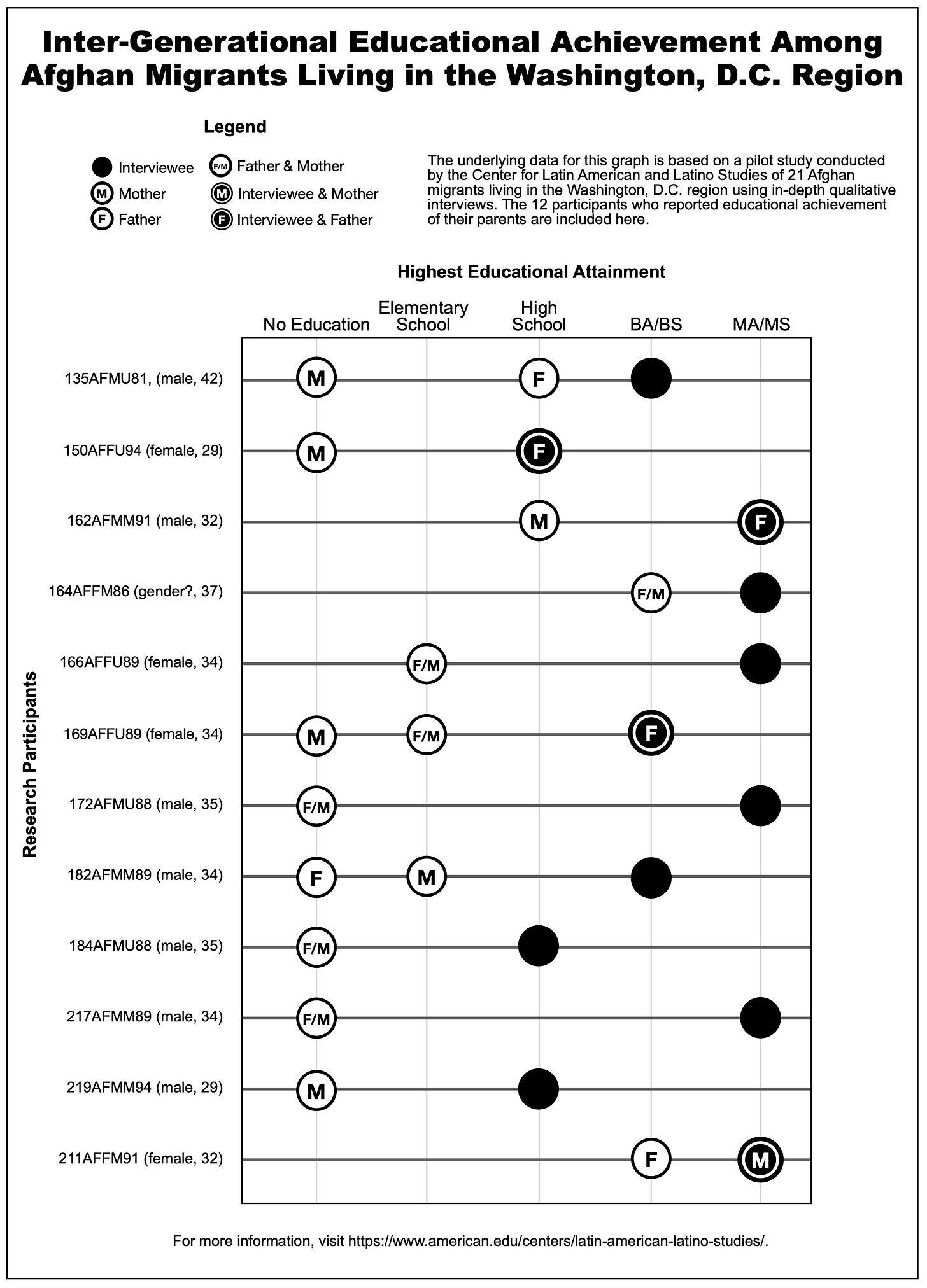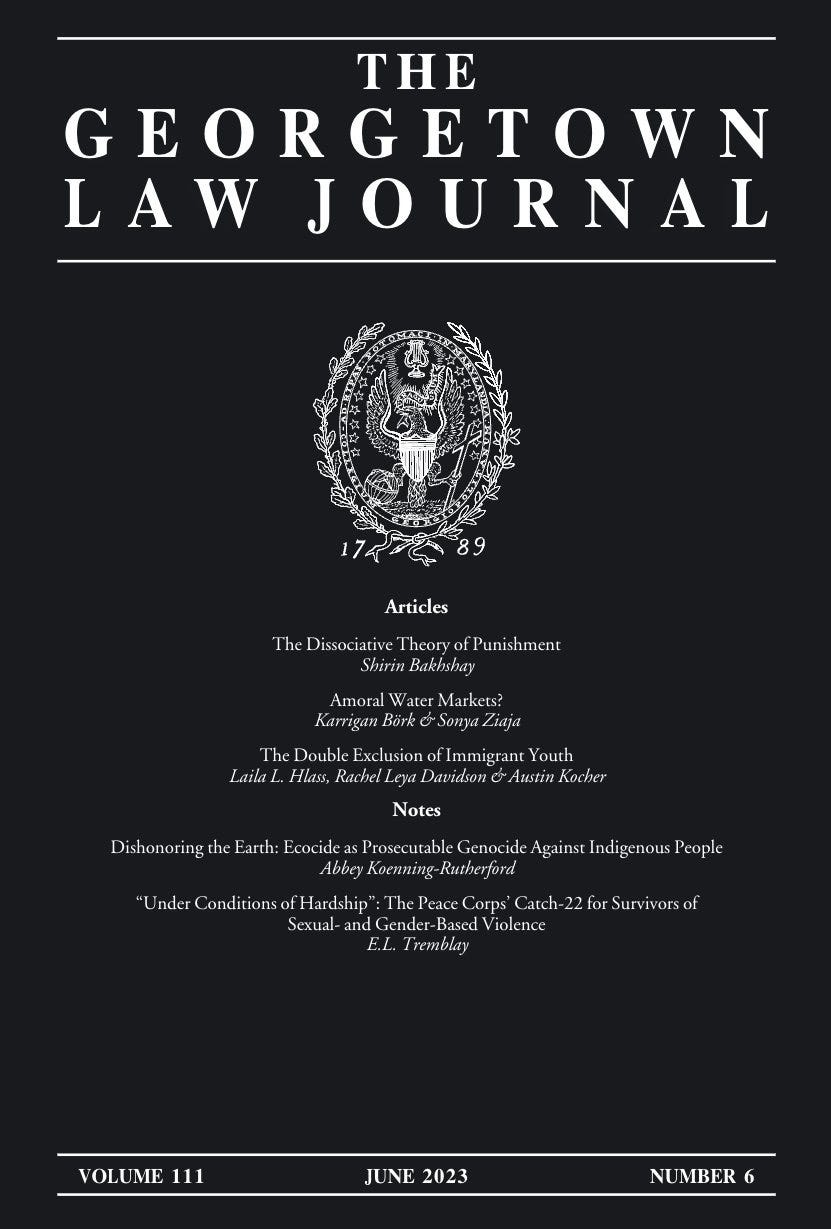Two New Research Articles Out Now, One Examines Afghan Refugees and Another Examines Vulnerable Migrant Youth
Two articles I contributed to were published today, each examining various aspects of the U.S. immigration and refugee systems. Please give them both a read or at least bookmark them for later.
Afghan Refugees in the DMV
The first article, published on the Immigration Lab website, is the first in a series of posts about Afghan refugees who arrived in the Washington, D.C., area. “The Educational Attainment of Recently Arrived Afghans in the DMV” uses first-hand narrative and educational attainment data.
The project relies on a mixed-methods research project conducted by faculty and students from the Immigration Lab and the Center for Latin American and Latino Studies (CLALS) at American University. Researchers solicited information about migrants’ identities and experiences using a survey form that collected quantitative data and asked open-ended follow-up questions to collect narrative-rich qualitative data.
Although the interviews themselves were done by others, this post was co-authored by our team of students and researchers, including Bashir Mobasher, Sofía Guerra, Makenna Lindsay, Diana Garay Flores, and Ernesto Castañeda. Sofía’s data visualization of intergenerational educational attainment is presented here.
The Double Exclusion of Immigrant Youth
The second article on Special Immigrant Juvenile Status was published in the Georgetown Law Journal with my colleagues Laila Hlass and Rachel Davidson. The article is titled “The Double Exclusion of Immigrant Youth.” This article looks at 10 years of data on immigrant youth who were abandoned, abused, or neglected, then applied for SIJS with the government only to find themselves in limbo for years. I wrote a post about this (below) when we originally posted the article on SSRN, but now the article is in its final form online.
Support public scholarship
Thank you for reading. If you would like to support public scholarship and receive this newsletter in your inbox, subscribe for free. And if you find this information useful, consider sharing it online or with friends and colleagues.






